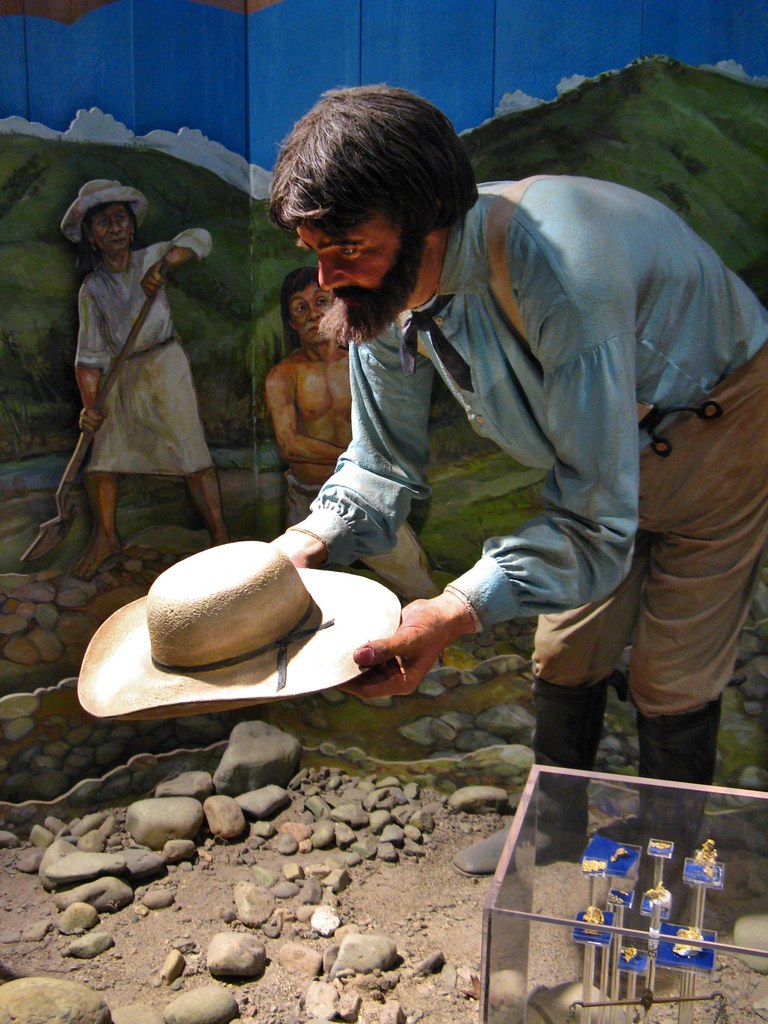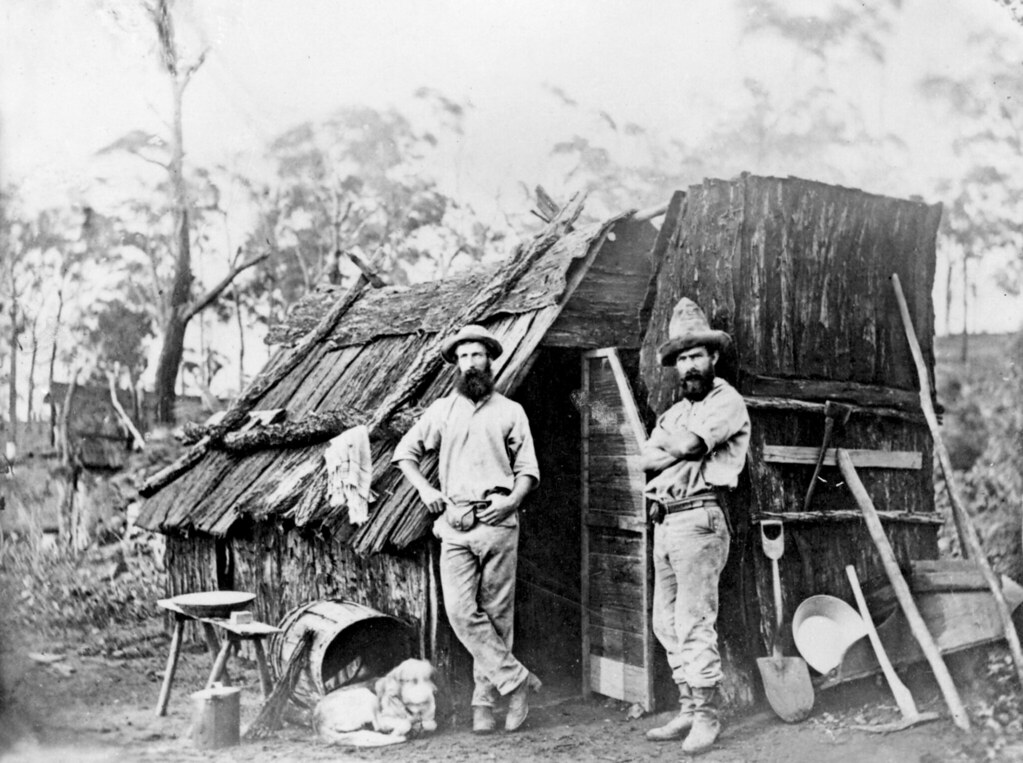Facts of the Gold Rush

Various gold rushes form the cornerstone of the historical precious metal trade. Explosive discoveries of gold and silver in California, Colorado, Australia, and hundreds of other parts of the world excited the public imagination and led to a revived interest in bullion mining. Modern precious metal investors should understand how the history of the gold rush impacts the contemporary market.
Today, we’ll discuss the facts of the gold rush, including causes and contexts, key impacts, and notable examples. By the end of this article, you should have a foundational understanding of the Gold Rush of the 19th and 20th centuries.
Causes and Context of the Gold Rush
Any discussion of the main facts of the gold rush begins with its context and causes. The term “gold rush” refers to a major discovery of gold bullion that leads to miners migrating to the affected area. Miners often drop everything and suffer terrible living conditions in order to make their fortune mining during a gold rush.
Major gold rushes in the United States – and other notable countries – are often precipitated by poor economic conditions. Because prospectors suffer during periods of economic instability or depression, they might be more willing to sacrifice everything for the chance to strike it big in California, Alaska, or even rural Australia. The facts of the gold rush are important, but fans of bullion history should also understand how causes and contexts influenced these important historical moments.
Discovery of Gold Deposits
Obviously, the facts of the gold rush always begin with the discovery of gold deposits. These discoveries can range in significance. Some initial gold yields were very small, only accounting for a few ounces. Other discoveries were massive and facilitated actual mining operations for sustained periods of time.
Initial discoveries of gold are generally found by sifting through rivers or other bodies of water. While the most successful gold rushes feature hard rock gold deposits, others are short lived – the actual gold is mined quickly and miners late to the scene head home empty-handed.
Just imagine dropping everything and heading into the undeveloped wilderness of California, only to leave after a few months, hungry, poor, and unsuccessful.
Some gold rushes have actually yielded far less gold than anticipated, which was disastrous for the miners who risked everything to go for gold. Fake gold rushes have also happened in the past – fool’s gold (pyrite) might be mistaken for actual gold bullion and trick miners into dropping their lives to search for worthless metal. Readers interested in the facts of the gold rush should understand that not all gold rushes were successful and profitable for miners.
Population Growth and Migration
After gold is discovered in a new area, the population of nearby settlements tends to skyrocket. Rudimentary mining operations during gold rushes often begin with rough campsites. Over time, successful mining operations tend to result in the development of barebones towns. Some historical mining towns in Colorado, such as Silverton, actually became so sophisticated that they’re still inhabited and developed today!
The number of miners who move to prospect during a gold rush varies based on a number of factors. The amount of gold found, the resources available near the mining site, and several other elements influence how many miners will be – or can be – sustained by a given gold rush.
Economic and Social Impacts
The facts of the gold rush involve social and economic impacts – both on the area where the gold was discovered and on other towns near it. Small cities and towns close to gold discoveries explode in popularity; this newfound popularity can be either good or bad for settlements. The massive growth that represents one of the core facts of the gold rush can help towns expand and grow.
But there’s a downside to the quickly increased population associated with a gold rush, too. Some towns just weren’t capable of accommodating the tens of thousands of miners who descended upon hearing the facts of the gold rush. After a gold rush ends, the towns near a gold discovery tend to suffer. After putting quite a bit of money into development to accommodate gold rush growth, the mass exodus of miners and their families from a mining town might bankrupt the community.
Influence on Settlement Patterns
During periods where gold rushes were popular, people tended to settle closer to where the action was. The facts of the gold rush also influenced the Westward expansion that characterized the late-1800s in the United States. Because of poor economic conditions in many parts of the country, miners increasingly viewed the rapidly expanding West as a way to improve their own lives.

One group of settlers were called the “Forty-Niners.” Their name, which inspires the American football team, comes from the year theft arrived in California. In 1949, they descended on the state of California from all around the world. Even today, we can credit the settlement of much of the West with the facts of the gold rush. It isn’t hard to see why, either. The gold rush represented an opportunity for economic advancement during a period of financial stagnation and a poor job market.
Cultural and Environmental Changes
In addition to the obvious cultural changes associated with the facts of the gold rush, historians and scientists alike have long noted the disastrous effects that gold rushes had on their environments. While some mining operations today try to remain as sustainable as possible, older operations weren’t so kind to the Earth. Complex mining operations often resulted in a spike in demand for lumber, which depleted the natural resource and led to widespread deforestation.
Key Locations and Discoveries of the Gold Rush
Below, we’ll discuss some of the key facts of the gold rush, including some of the main areas where gold rushes happened. Let’s first focus on four major gold rushes: California, Klondike, Australian, and Witwatersrand. Finally, we’ll cover some of the smaller and lesser-known gold rushes from all around the world.
California Gold Rush (1848-1855)
From 1848 to 1855, around 300,000 people rushed to California after the discovery of gold by prospector James W. Marshall. There were a number of consequences to the California Gold Rush, but the most notable is likely the Compromise of 1850. Because of the rapid population increase caused by the facts of the gold rush in California, the territory was quickly eligible to become a U.S. state.

Earlier discoveries of gold and California had caused minor migrations, but it was Marshall’s finding of pure gold bullion near Coloma, California that launched one of the world’s most significant and impactful gold rushes in history. Even today, the effects of the California Gold Rush are visible in today’s California; the state’s massive expansion and diverse population are direct results of the explosive migration caused by the discovery of gold.
Klondike Gold Rush (1896-1899)
The Klondike Gold Rush is actually still commemorated on Canadian coins today. The Klondike Gold Coin celebrates the history of this fascinating period of Canadian history. Localized to the remote Klondike region in Yukon, around 100,000 prospectors made their way to the region, climbing snowy mountains and weathering unbearable living conditions in the hope that they could secure a financial future with gold.

But not all of these prospectors made it to the mining area. Epidemics, fires, and a lack of food kept a significant portion of prospectors from actually securing their spots within the Klondike area. The Klondike Gold Rush also wasn’t good for natives in the area, including the Han, who were forced onto reservations in order to make room for gold prospectors.
Australian Gold rush (1851-1914)
While we’ve consolidated our discussions of Australia’s Gold Rush to one section about the facts of the gold rush, there were a number of gold stampedes in Australia’s early history. In the period from 1851 to 1914, discoveries of gold in several parts of Australia led to mass migration and settlement. The facts of the gold rush in Australia has a number of notable effects. Perhaps most importantly, the influx of immigrants shifted the country out of its status as a convict colony, paving the way for Australia’s eventual independence as a free state.

Unlike some of the other isolated gold rushes on our list, the Australian Gold Rush was characterized by the spread of gold mines across different parts of the continent. The rush really started in 1851, when miners discovered gold in Clunes, a small town in modern-day Victoria, Australia. Within a few months, the rush had spread even further, expanding into Buninyong.
Witwatersrand Gold Rush (1886-1888)
Like several of the gold rushes we’ve covered so far, the Witwatersrand Gold Rush resulted in the establishment of a new city. Today, Johannesburg is the most populated city in South Africa. But before the Witwatersrand Gold Rush, it wasn’t even a settlement at all. Despite the gold rush really lasting only a couple of years, it’s considered one of the most significant and largest gold rushes in history. Even Paul Kruger, whose face decorates the ever-popular Gold Krugerrand Coin, had a role to play in the rapid development that resulted from the Witwatersrand Gold Rush.

The gold was initially discovered within the Witwatersrand Basin, and competition for the area’s gold deposits eventually led to the Second Boer War, which set the stage for total British control over the country of South Africa. Johannesburg was founded initially as a settlement for prospectors, who came from all over the world to capitalize on South Africa’s substantial gold deposits.
Other Significant Gold Rushes Worldwide
We don’t have time to discuss all of the significant gold rushes in history. Gold rushes in Carolina, Brazil, the Black Hills, and Nome are all historical events with widespread consequences. If you’re interested in understanding how the facts of the gold rush impact the modern bullion industry, consider reading up more on some of the world’s most significant gold rushes.
Life and Challenges in the Gold Rush
Life was not easy for the people who dropped everything and ventured into the wilderness to make their fortune. The facts of the gold rush, particularly where prospector life is concerned, were rough and often dangerous for miners.
Mining Methods and Techniques
Mining techniques used to extract gold shifted during the early periods of the gold rush. Miners who first found gold in an area like California generally used panning; this meant that they would sift water through a shallow pan with small holes in it. The water would fall through, while the gold was saved and extracted from the dirt and liquid. After all of the gold was taken from rivers and other bodies of water, it was time for miners to extract gold from actual hard rocks.
Boomtowns and Lawlessness
“Boomtowns” refer to small settlements that experienced significant growth during a gold rush. This explosive growth was a great thing in many ways; it led to increased development and expansion of resources, especially for the people who were already living in nearby settlements.
But there was also a downside to the creation of boomtowns. The mixing and meshing of different cultures, along with the unprecedented rate of growth associated with mining boomtowns, led to lawlessness. Oftentimes, mining towns failed to secure proper infrastructure to maintain order and law for their growing populations.
Social and Racial Dynamics
Like we mentioned above, the facts of the gold rush led to clashes between different cultures. Miners came from all over the world and boasted various socioeconomic, racial, and cultural backgrounds. This sometimes led to conflict, but it also created a unique set of cultures along important mining areas. Even today, diversity in regions like California can be traced back to the diverse and versatile populations of boomtowns.
Hardships and Dangers
Mining in the olden day of gold prospecting was extremely dangerous. Aside from the danger of operating rudimentary mining machines, prospectors also had to deal with harsh conditions, dangerous wildlife, and limited food supplies in order to survive in the mining landscape. The facts of the gold rush include inspiring stories of survival and riches, but the real story of gold rushes around the world also involves plenty of hardship.
Legacy and Cultural Impact
Its legacy and cultural impact is one of the most important modern facts of the gold rush. Modern coins like the Klondike Gold Coin commemorate one of Canada’s most famous historical periods, and we can credit gold rushes with the discovery and development of some of the world’s most popular cities and states.
Final Thoughts: Major Facts of the Gold Rush
Gold rushes, both in the United States and around the world, have been some of the most fascinating periods of history. Many readers want to know more about the facts of the gold rush, and we’ve got you covered with just a bit of historical analysis.
Do you want to invest in coins that celebrate the historic Klondike Gold Rush? Please contact us with any questions you might have.
About The Author
Michael Roets
Michael Roets is a writer and journalist for Hero Bullion. His work explores precious metals news, guides, and commentary.
